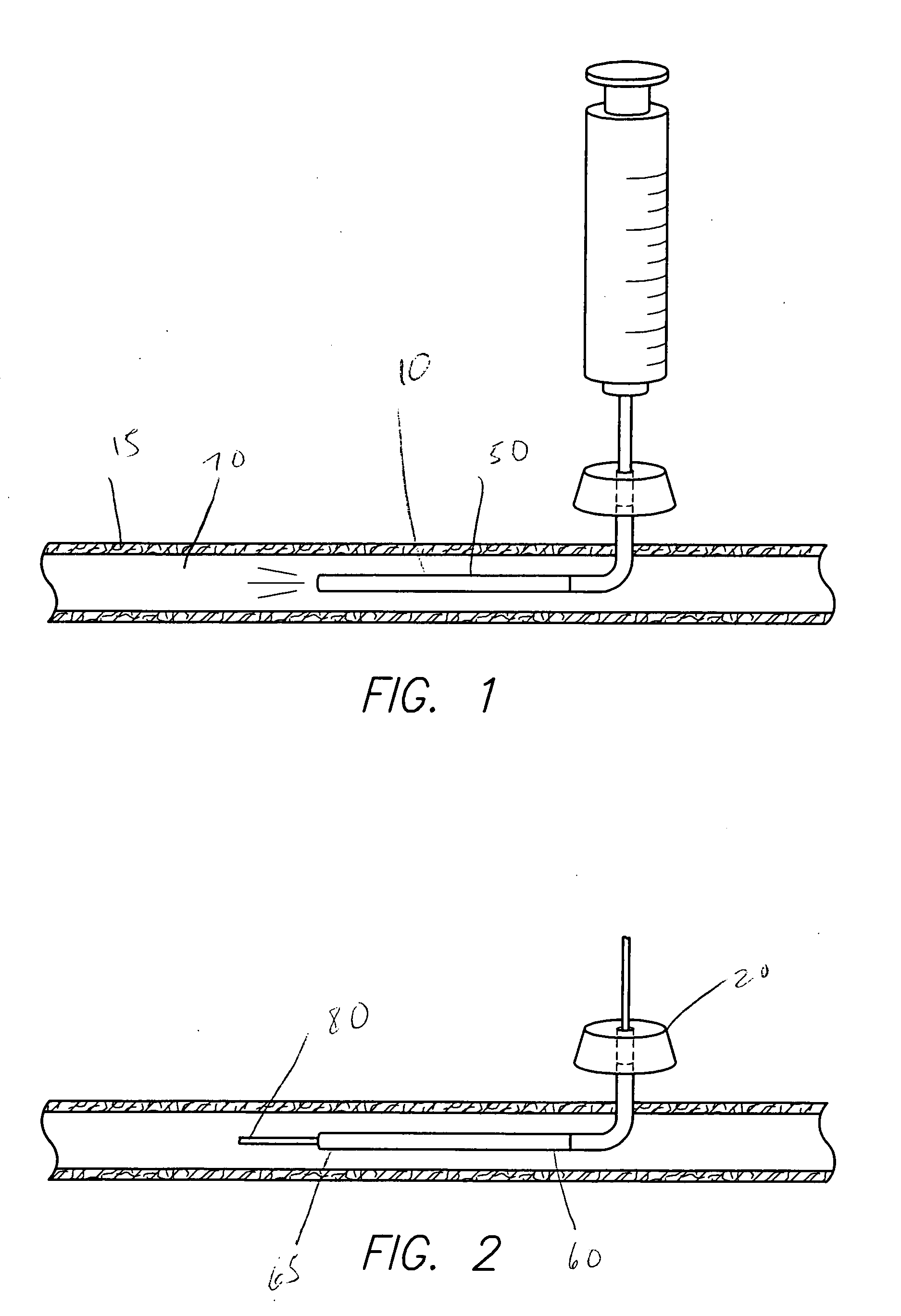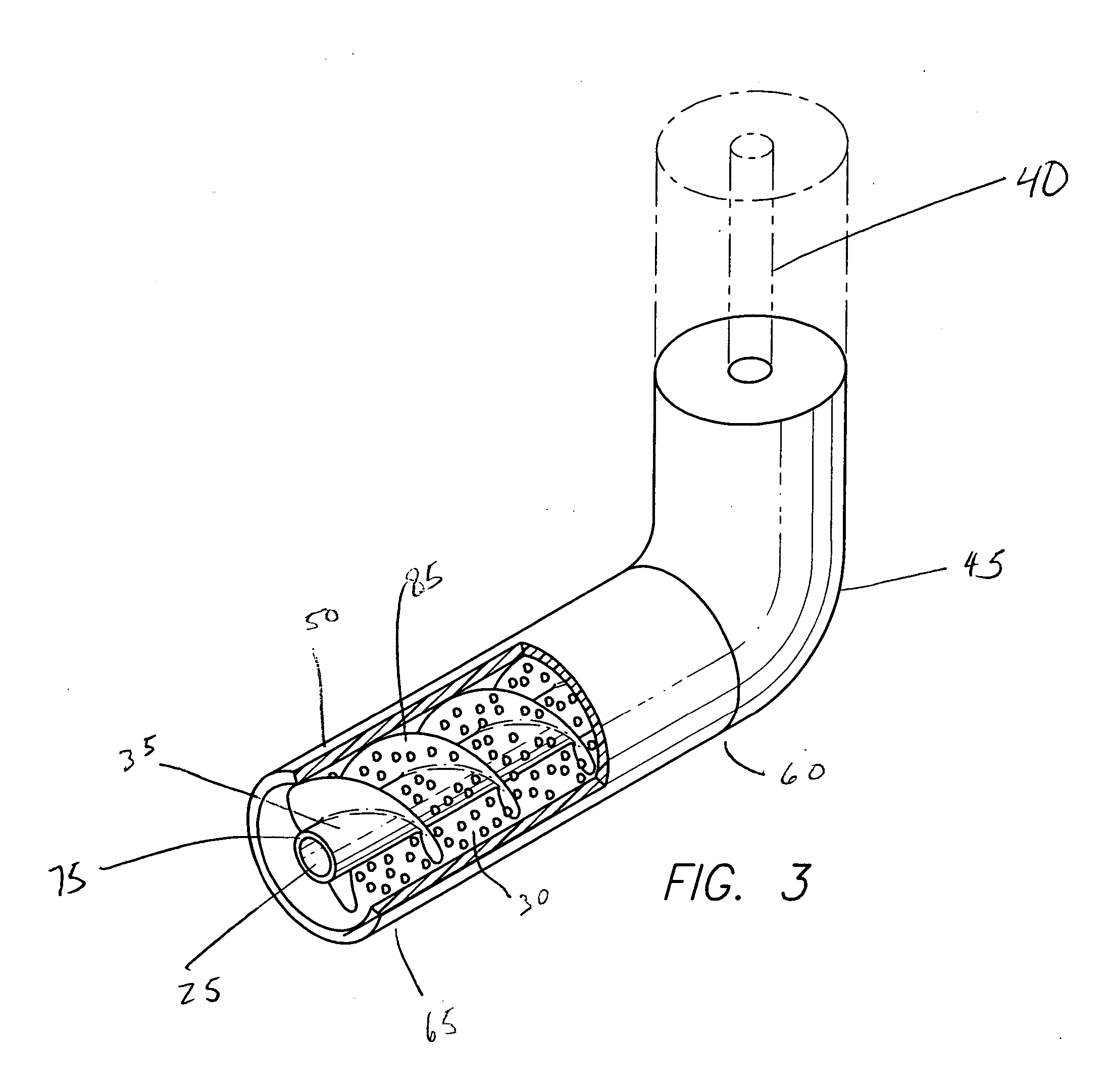Implantable intravascular delivery device
- Summary
- Abstract
- Description
- Claims
- Application Information
AI Technical Summary
Benefits of technology
Problems solved by technology
Method used
Image
Examples
examples
Example of Device for Treatment of Type I Diabetes
[0132] Type 1 diabetes, also called juvenile diabetes or insulin-dependent diabetes, is usually first diagnosed in children, teenagers, or young adults. In this form of diabetes, the islet cells of the pancreas no longer make insulin because the body's immune system has attacked and destroyed them.
[0133] Although Type I diabetes can be controlled with insulin injections, this treatment is not a cure. Safe blood glucose levels cannot be precisely and continuously maintained. An overdose of insulin results in hypoglycemia, a low level of blood glucose. This can lead to confusion, loss of consciousness, coma, and even death. On the other hand, extended high blood glucose levels result in significant long-term complications, such as damage or failure of various bodily organs including the eyes, kidneys, nerves, heart and blood vessels.
[0134] A cell-based therapy for Type I diabetes would restore a patient's ability to control blood g...
PUM
 Login to View More
Login to View More Abstract
Description
Claims
Application Information
 Login to View More
Login to View More - R&D
- Intellectual Property
- Life Sciences
- Materials
- Tech Scout
- Unparalleled Data Quality
- Higher Quality Content
- 60% Fewer Hallucinations
Browse by: Latest US Patents, China's latest patents, Technical Efficacy Thesaurus, Application Domain, Technology Topic, Popular Technical Reports.
© 2025 PatSnap. All rights reserved.Legal|Privacy policy|Modern Slavery Act Transparency Statement|Sitemap|About US| Contact US: help@patsnap.com



